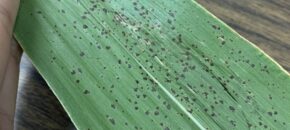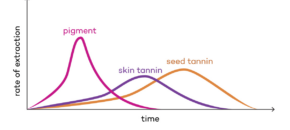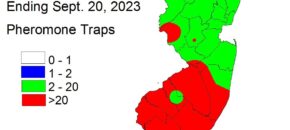Attention All NJ Deer Hunters! The southern Deer Hunter Forum hosted by NJ Fish & Wildlife to discuss preliminary proposals on simplifying NJ’s deer hunting regulations has changed locations. Formerly scheduled to be held at Batsto Village State Park, the Southern Deer Forum WILL NOW BE HELD at Stockton University to better accommodate expected attendance. Details follow.Southern Deer […]
Continue reading...NJ Fish & Wildlife Announces Change in Southern Deer Forum Location
Corn Tar Spot Found in New Jersey

The presence of Corn Tar Spot (Phyllachora maydis) has been confirmed in New Jersey. Laboratory examination of a corn sample from New Jersey revealed the presence of tar spot. Tar spot is a foliar disease of corn that commonly occurs throughout Mexico, Central America, South America, and the Caribbean. The disease was identified in the […]
Continue reading...Notes from the 2022 Chambourcin Wine Tastings and Evaluations

A Chambourcin wine tasting and evaluation meeting for New Jersey winemakers was held on November 10, 2022, at the Autumn Lake Winery, Williamstown, in Gloucester County. The notes below are based on individual observations of Chambourcin growers and winemakers, follow-on discussions, and related literature. The responses to the survey sent before the event are also […]
Continue reading...Vegetable IPM Update 9/20/23

Sweet Corn Northern and central blacklight traps and all pheromone traps continue to catch corn earworm (CEW) moths, although recent night temperatures in the low 50s have depressed numbers somewhat this week. Pheromone trap information is available from all northern and central sites, with now very limited input from southern New Jersey. We will use […]
Continue reading...Steven Kristoph Nursery Twilight Meeting
Steven Kristoph Nursery Twilight Meeting September 28, 2023 – 5:30pm to 7:00pm Steven Kristoph Nursery 9 Roberts Rd, Millstone, NJ 08535 NJ Pesticide License Recertification Credits (1A: 3, 3A: 3, 10: 3, PP2: 3) Join Steven Kristoph and Bill Errickson for an in-person tour of Steven Kristoph Nursery to discuss best management practices for […]
Continue reading...Attention Deer Hunters – NJ Fish & Wildlife Forums on Simplified Hunting Regulations
NJ Fish & Wildlife is looking for your input and will be hosting three Deer Hunter Forums to discuss preliminary proposals on simplifying NJ’s deer hunting regulations. Hunters are asked to attend for discussions of ideas on how to make deer hunting regulations less complicated and less expensive. Your feedback is crucial to keep deer hunting a […]
Continue reading...